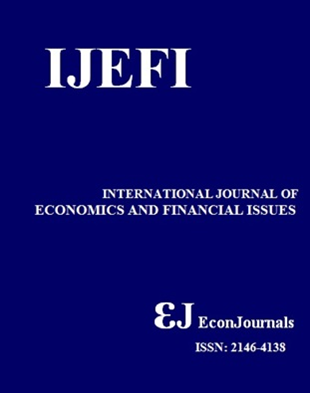Modelling Foreign Direct Investments to South Africa: NARDL Approach#1
DOI:
https://doi.org/10.32479/ijefi.19301Keywords:
Foreign Direct Investment, Real Interest Rate, South Africa, NARDL, Capital, Economic GrowthAbstract
The paper inspects inflow of foreign direct investment (FDI) into South Africa. Nonlinear autoregressive distributed method is used in this study to model the relationships between net foreign direct investment inflows and the share of goods exports to GDP (%) and the real interest rate. The study uses annual data ranging from 1985–2020. The aim is to test for asymmetric relationship between real interest rate and foreign direct investments. The research analyses the extent to which changes in real interest rates affect FDI inflows, focusing on the differential effects of rate increases versus rate decreases. The results indicate asymmetric relationship between FDI and interest rate both in the long run and short run. Inflow of FDI into South Africa behaves more noticeably to interest rate decline than to its rise. Export stimulates inward investments in short and long run. Unlike previous studies, the presented article found that repo rate does have an effect, and moreover, it is asymmetric relationship. The outcomes notify governing bodies and wider public on how important negative and positive changes in real interest rate for investment activities in South Africa are.Downloads
Downloads
Published
2025-06-18
How to Cite
Lacusova, S., & Kromkova, J. (2025). Modelling Foreign Direct Investments to South Africa: NARDL Approach#1. International Journal of Economics and Financial Issues, 15(4), 334–342. https://doi.org/10.32479/ijefi.19301
Issue
Section
Articles
Views
- Abstract 110
- FULL TEXT 118




